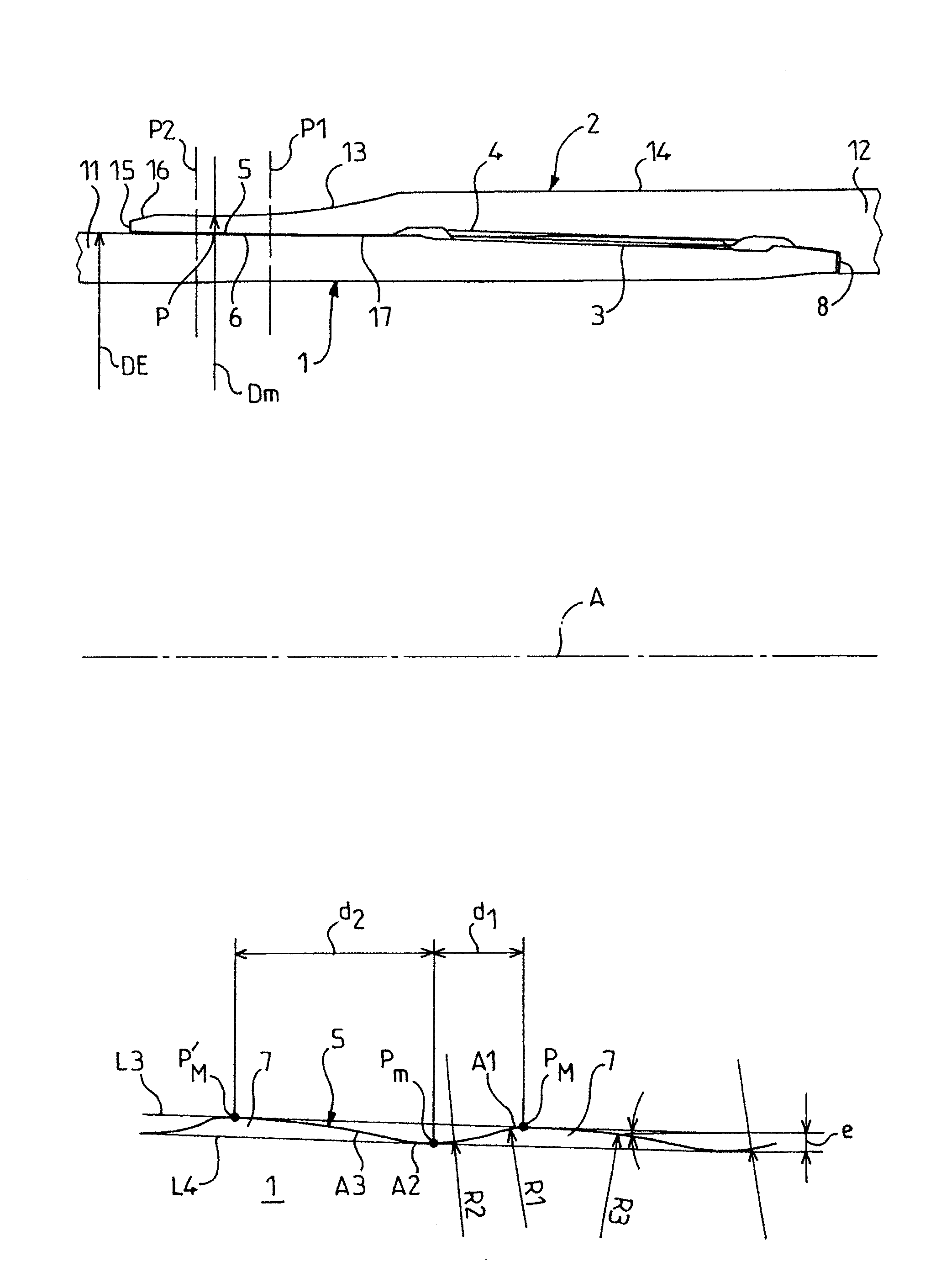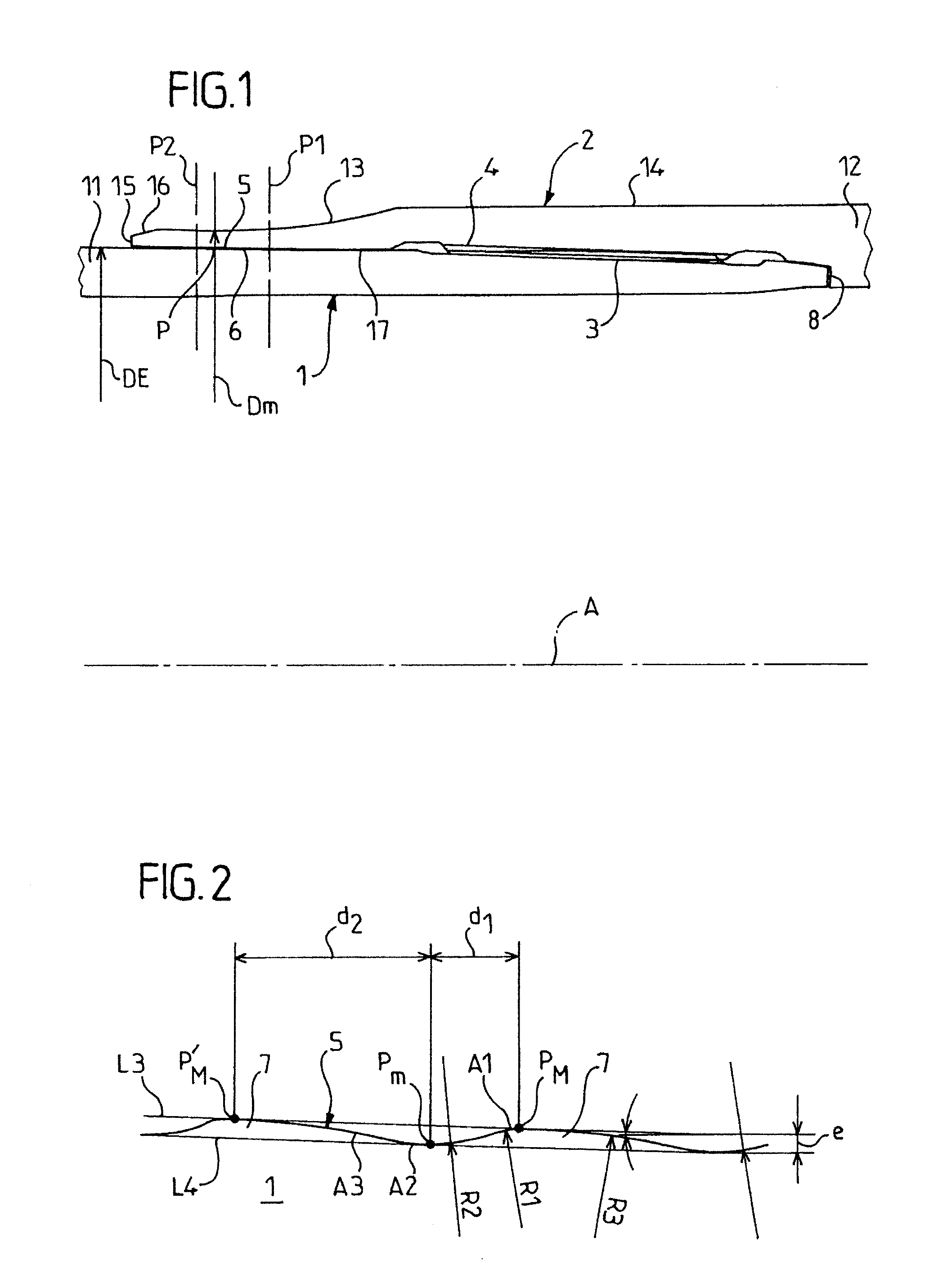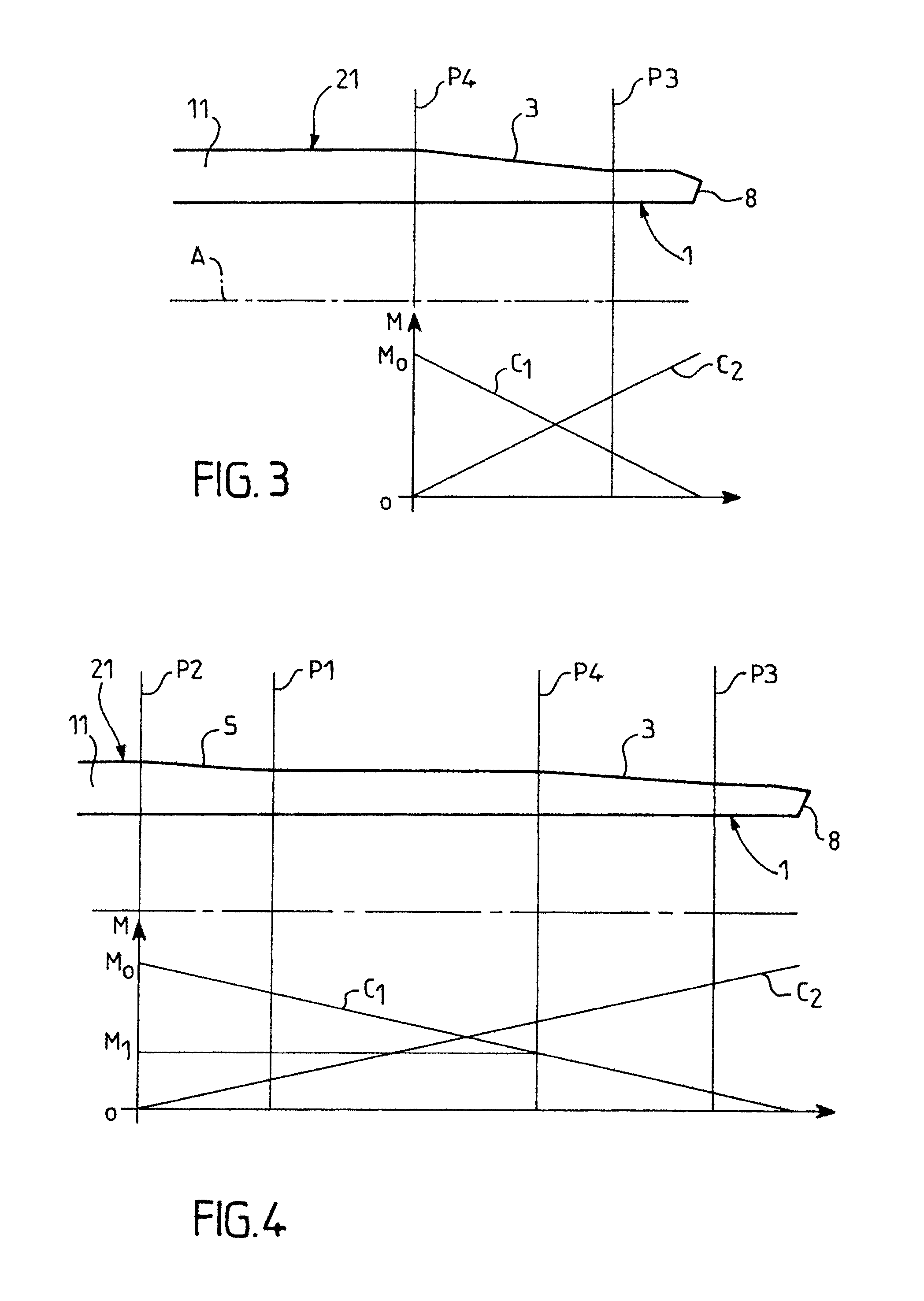Threaded tubular connection which is resistant to bending stresses
- Summary
- Abstract
- Description
- Claims
- Application Information
AI Technical Summary
Benefits of technology
Problems solved by technology
Method used
Image
Examples
Embodiment Construction
[0086]The threaded tubular connection shown in FIG. 1 comprises a male tubular element 1 and a female tubular element 2 provided with respective tapered threaded portions 3, 4 which cooperate for mutual make up of the two elements. The element 1 is formed at one end of a great length tube 11 and element 2 is formed at one end of a tubular coupling 12 for connecting two tubes similar to 11. A plurality of tubes similar to 11 each one of which has two threaded elements similar to 1 at its ends can then be connected together through couplings similar to 12 each one of which has two threaded elements similar to 2 at its ends to form a string of tubes for an oil well, for example.
[0087]In the example shown, tube 11 has between its two male elements i.e. over the major portion of its length, termed the regular portion, a uniform external diameter ED of 177.8 mm (7 inches) which represents the nominal diameter of the threaded connection. The values for the dimensions given below take this ...
PUM
 Login to View More
Login to View More Abstract
Description
Claims
Application Information
 Login to View More
Login to View More - R&D
- Intellectual Property
- Life Sciences
- Materials
- Tech Scout
- Unparalleled Data Quality
- Higher Quality Content
- 60% Fewer Hallucinations
Browse by: Latest US Patents, China's latest patents, Technical Efficacy Thesaurus, Application Domain, Technology Topic, Popular Technical Reports.
© 2025 PatSnap. All rights reserved.Legal|Privacy policy|Modern Slavery Act Transparency Statement|Sitemap|About US| Contact US: help@patsnap.com



